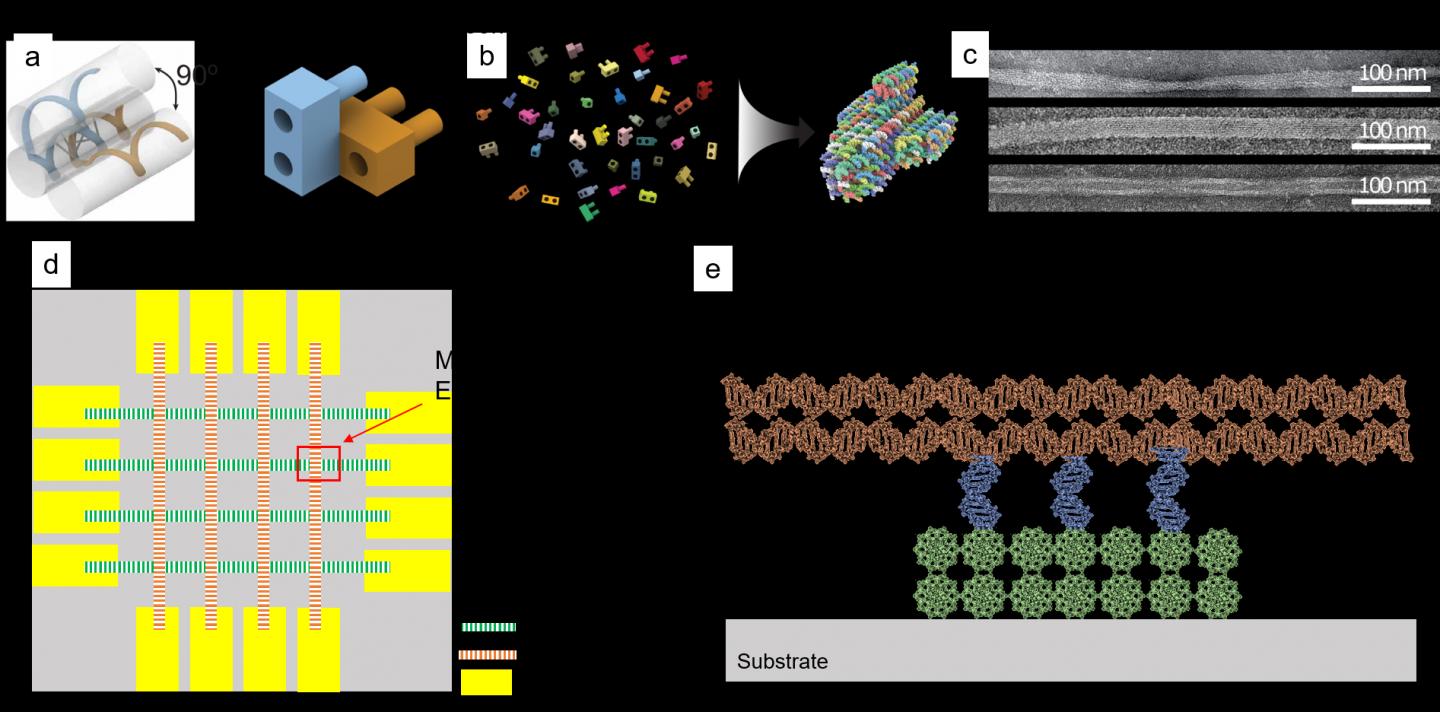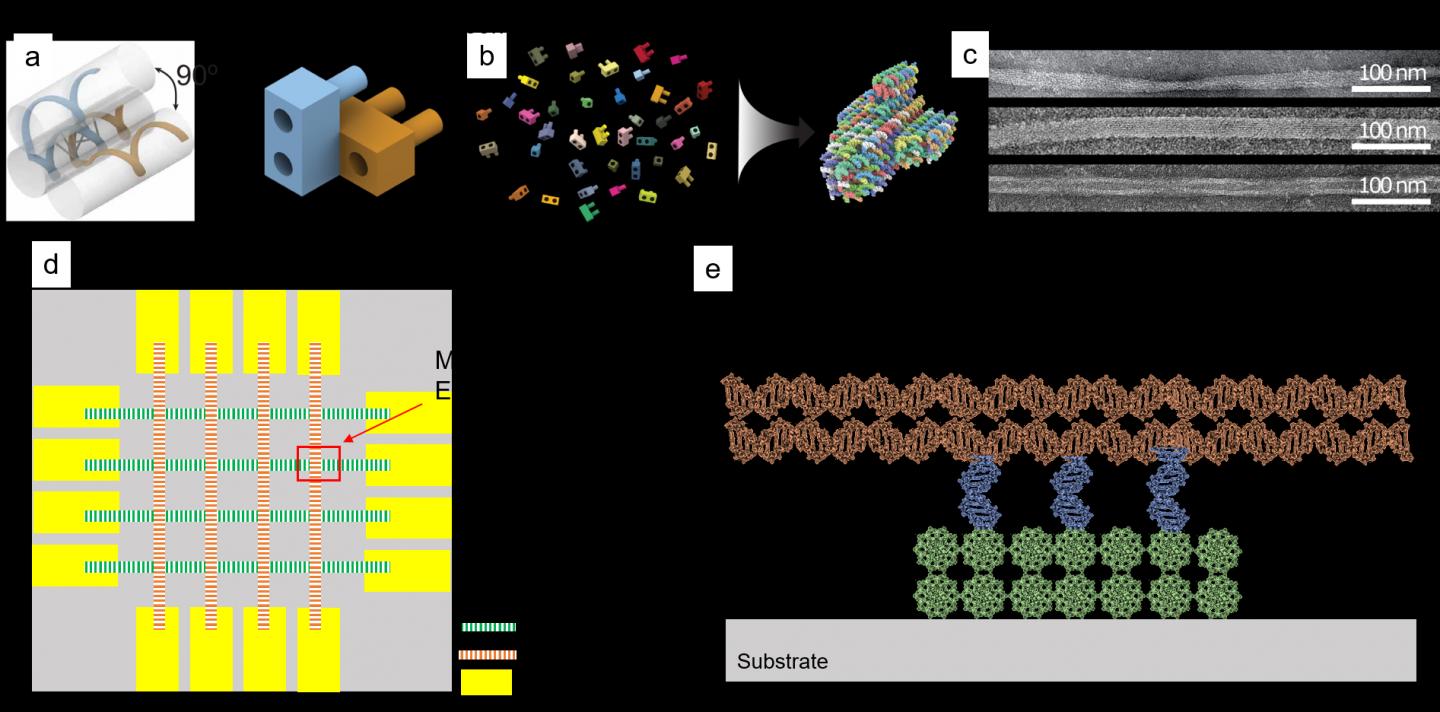
Credit: (Josh Hihath, UC Davis; Yonggang Ke, Emory University)
Josh Hihath is trying to fuse biology and electrical engineering and to build new types of electronic memory based on DNA. Hihath, professor in the UC Davis Department of Electrical and Computer Engineering, is principal investigator of a grant just funded by the Semiconductor Synthetic Biology for Information Processing and Storage Technologies (SemiSynBio) program. SemiSynBio is a partnership between the National Science Foundation, the Semiconductor Research Corporation and the Intelligence Advanced Research Projects Activity.
Advances in memory technology have helped make more advanced and compact devices possible. But electronic memory consumes quite a lot of power, can be difficult to read and write and has a limited lifespan.
But billions of years ago, nature came up with a system for system for storing information: DNA. The average human stores 40 exabytes – 40 million Terabytes – of information in their DNA every day and DNA can potentially remain stable for thousands of years
The goal of the new project, which includes co-principal investigators M.P. Anantram at the University of Washington and Yonggang Ke at Emory University as well as Hihath's lab at UC Davis, is to create a DNA-based read-only memory (ROM) that can be programmed, read electronically and interface with electronic devices. The researchers will develop ways to grow tiny strands or "nanowires" of DNA between electrodes.
Information stored in DNA
For biological purposes, DNA stores information as a series of chemical bases, adenosine, cytosine, guanine and thiamine, represented the letters ACGT. This code is "read" by enzymes to make proteins.
Hihath's proposed DNA-ROM will instead store information based on the electrical properties of the DNA molecules. Different DNA molecules have different electrical conductance and these electrical properties – rather than the DNA letter code itself – could represent ones and zeroes in digital information.
The electrical properties of DNA can be influenced by the base sequence, length of the molecule, and the number of strands in a junction.
Total grant funding is for $1.5 million over three years, divided between the three campuses. The grant is among $12 million in grants from the SemiSynBio program announced July 17.
###
Media Contact
Andy Fell
[email protected]
530-752-4533
@ucdavisnews
http://www.ucdavis.edu





